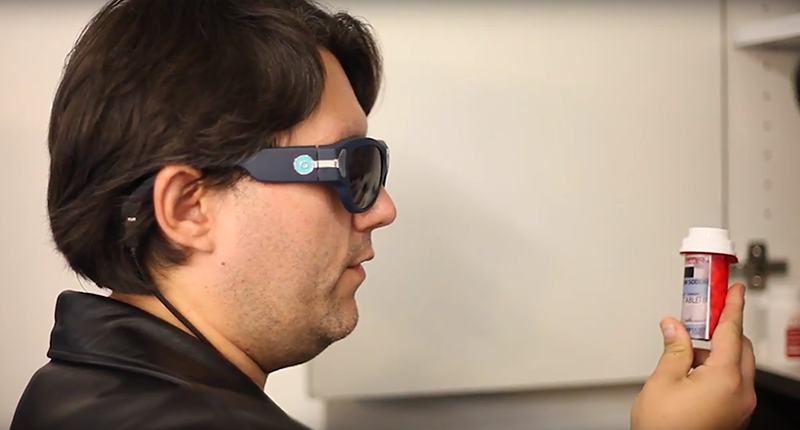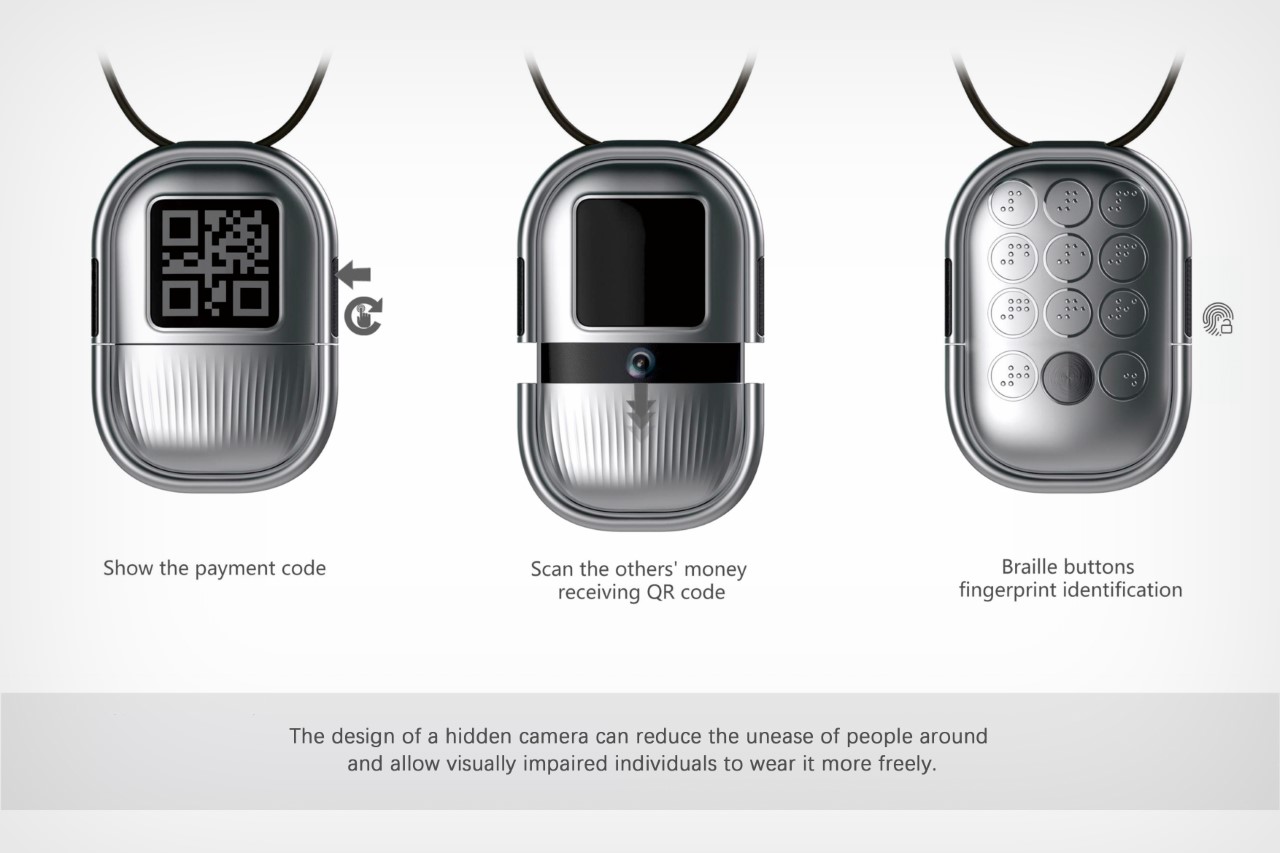Discover Innovative Tools Created for the Visually Impaired
The advancement of innovative devices for the aesthetically impaired stands for a significant development in access and freedom. Technologies such as smart glasses with AI abilities and mobile applications made to supply acoustic descriptions are improving everyday experiences for customers. In addition, wearable tools that employ haptic feedback boost ecological recognition, while contemporary Braille advancements use brand-new ways to engage with text. As these tools remain to develop, their effect on the lives of those with aesthetic impairments raises important questions regarding the future of inclusivity and autonomy in different elements of life. What exists ahead in this technological landscape?
Smart Glasses for Navigating

Smart glasses made for navigation are revolutionizing the method visually impaired individuals interact with their setting. These sophisticated tools use a mix of video camera innovation, man-made intelligence, and auditory comments to give real-time info about surroundings. By utilizing barrier discovery systems, smart glasses can alert customers to possible hazards, making it possible for safer mobility in both unknown and familiar setups.
The assimilation of GPS modern technology better enhances navigation capacities, enabling individuals to receive auditory instructions as they relocate. This hands-free method not only cultivates self-reliance yet also encourages aesthetically damaged people to navigate urban landscapes with enhanced confidence. In addition, several smart glasses are outfitted with functions that recognize sites and road indications, supplying contextual information that boosts the individual experience.
In addition, the advancement of these gadgets is consistently advancing, with companies functioning to improve the accuracy of item acknowledgment and increase the series of navigational attributes. As wise glasses become much more obtainable and budget-friendly, they hold the prospective to dramatically change every day life for visually damaged individuals. Inevitably, these cutting-edge devices represent a crucial step towards inclusivity, offering enhanced wheelchair and a higher feeling of freedom for people navigating the globe around them.

Mobile Apps for Daily Living
How can mobile applications enhance the everyday lives of aesthetically damaged people? Mobile applications are reinventing the method visually damaged customers browse their atmospheres, manage daily jobs, and gain access to info. These applications offer vital assistance via different capabilities, cultivating freedom and improving high quality of life.
Several cutting-edge mobile applications are created specifically for everyday living. As an example, applications like Be My Eyes link aesthetically impaired customers with sighted volunteers using video clip phone calls, permitting them to obtain real-time aid with tasks such as checking out tags or navigating strange rooms. Likewise, Seeing AI, developed by Microsoft, makes use of expert system to define surroundings, read message, and identify objects, successfully changing a mobile phone into an effective tool for day-to-day help.
In addition, navigating applications customized for the visually impaired, such as Aira and BlindSquare, provide audio-based instructions and ecological information, allowing customers to traverse their surroundings securely and with confidence. Beyond navigating and immediate assistance, mobile apps additionally support organization and task monitoring, with features that help individuals set reminders, develop to-do checklists, and track appointments. In summary, mobile applications work as important resources, empowering visually impaired people to lead more independent and meeting lives.
Wearable Technologies for Help
Empowerment via innovation is progressively evident in the realm of wearable gadgets created to assist aesthetically damaged people. These innovative devices integrate effortlessly right into daily life, boosting navigation and offering essential feedback to users. Smart glasses furnished with electronic cameras can check out and acknowledge faces text aloud, allowing users to engage more confidently in social and specialist setups.
One more notable development is using haptic feedback systems in wearable devices. These systems make use of resonances or other responsive signals to share info concerning try here the customer's atmosphere, such as challenges or changes in surface, boosting mobility and safety. Wearable innovations likewise consist of wristbands that connect to mobile phones, notifying users to notifications with refined vibrations, thus improving connectivity without reliance on visual hints.
As these modern technologies continue to develop, they are not only boosting independence for visually impaired people however also promoting a greater sense of inclusion in culture. By bridging the gap between challenges encountered in day-to-day living and the capacity for freedom, wearable technologies work as essential tools in the quest for equality and empowerment for those with visual problems.
Sound Description Tools
Audio description tools play a vital function in boosting access for aesthetically impaired individuals, providing them my site with the capacity to involve with visual media. Mobility aids for visually impaired users. These devices use narrated descriptions of crucial visual components in movies, tv shows, and live performances, making sure that individuals can completely comprehend the context and emotions conveyed via visuals
Sound description can be incorporated into various platforms, consisting of streaming solutions, cinema screenings, and live movie theater. Many popular streaming solutions currently include audio summary as an ease of access feature, permitting viewers to choose it conveniently. Along with conventional media, specialized applications also exist, giving audio descriptions for art exhibitions, galleries, and other cultural events.
The performance of audio summary hinges on the ability of the storytellers, that need to communicate visual details succinctly without interfering with the initial audio. Innovations in this area are likewise leading the way for more individualized experiences, where individuals can readjust the level of detail and pacing according to their choices.
Braille Innovations and Tools
Braille tools and technologies have substantially changed the means visually damaged individuals communicate with text and information. Modern advancements have caused the advancement of versatile tools that boost proficiency and independence amongst customers. Especially, Braille present modern technologies have actually progressed, permitting dynamic analysis experiences. These devices convert electronic message right into Braille, allowing users to access a huge range of details on tablet computers, smartphones, and computers.
Additionally, mobile Braille notetakers incorporate typical Braille input with contemporary performances, facilitating note-taking, scheduling, and paper modifying on the move. Voice-activated assistive devices. These compact gadgets usually feature text-to-speech capacities, linking the void in between Braille and acoustic info
On top of that, innovative Braille printers have arised, enabling users to produce Braille tags, documents, and academic products effectively. This accessibility fosters higher involvement in professional and instructional atmospheres, inevitably promoting inclusivity.
Furthermore, research into clever Braille visually impaired modern technologies remains to expand. Devices that incorporate artificial intelligence are being checked out to provide real-time navigation help and contextual information, boosting the customer experience in diverse settings. Overall, these innovations mirror a dedication to equipping aesthetically damaged people via technology, guaranteeing they can conveniently gain access to and engage with the world around them.

Conclusion
The development of innovative tools for the aesthetically damaged significantly enhances freedom and top quality of life. These technologies not only foster better inclusion but likewise advertise autonomy in daily activities, ultimately contributing to a much more available and equitable culture for aesthetically impaired individuals.
As wise glasses end up being a lot more easily accessible and inexpensive, they hold the potential to substantially transform daily life for visually damaged users. Mobile applications are revolutionizing the method visually impaired individuals navigate their environments, take care of day-to-day jobs, and accessibility info. Apps like Be My Eyes link aesthetically damaged users with sighted volunteers through video clip phone calls, allowing them to receive real-time assistance with jobs such as reviewing tags or browsing unfamiliar spaces.In addition, navigation applications customized for the visually damaged, such as Aira and BlindSquare, supply audio-based directions and ecological details, enabling individuals to traverse their surroundings securely and confidently.The improvement of ingenious devices for the visually damaged dramatically boosts freedom and quality of life.